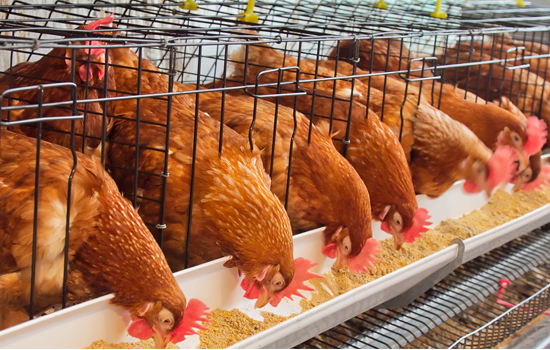How to reduce feed waste during chicken raising?
- font size decrease font size increase font size
In addition to poultry farming equipment, the biggest production cost of chicken farms is the cost of feed, which accounts for about two-thirds of the total expenditure. According to statistics, in poorly managed and ineffective chicken farms, feed waste can account for 3% to 8% of annual feed consumption. Therefore, reducing feed waste is an important measure to increase the efficiency of chicken farms.
1. Maintain a suitable ambient temperature. When building a chicken house, pay attention to the insulation performance of the chicken house. It is ideal to keep the temperature of the house at 8 °C ~ 24 °C. In the cold winter, when the temperature drops below 5 °C, warmth measures should be taken to reduce the unnecessary waste of feed caused by cold stress. Production practice shows that for every 3 °C reduction in ambient temperature, the consumption will increase by about 5g, which is used to maintain body temperature and lay eggs. In the winter, effective measures are taken to reduce the temperature difference in the house. The front end of the longitudinally ventilated house is significantly larger than the chicken in the middle and rear end.
2. Develop a reasonable lighting system. The illumination time is too long, more than 16h or the light intensity is too large. If it exceeds 20lx, the feed consumption will increase and the feed compensation will decrease. In the cold winter night, the light consumption is prolonged, and the feed consumption is obviously increased. In this season, the lights should be turned on in the early morning to make up for the lack of light, and the lights can be turned off in advance at night.

3. Eliminate inferior chickens in time. Including weak chickens, sick chickens, discontinued chickens, low-yielding chickens, and scorpion chickens. These chickens not only waste feed, but also affect the health of the entire flock. If you find more pheasants, check the calcium, phosphorus and vitamin D3 content in the diet and the mixing of the feed.
4. Strengthen feed management. Prevent raw materials and finished products from rain, moisture, mildew, sun exposure, and expiration. Large chicken houses equipped with feed storage tanks should clean the tank walls in time to prevent the moisture from sticking to the tank wall, causing mildew, causing direct waste of feed and poisoning of chickens.
5. Eliminate the mouse. Chicken farms are extremely vulnerable to rodents due to their suitable environment and adequate food. The health hazards of rats and chickens are very alarming. According to foreign sources, a 250g rat can eat food equivalent to his own weight every day. Rats always pick fresh and good ingredients, and also urinate and defecate in the feed, causing pollution. Rats not only spread diseases, bite appliances, but also steal large amounts of feed. Many chicken farms account for 1% to 2% of the total feed, and the number is staggering.
6. Correctly break the time. Broken mites can not only prevent the occurrence of cockroaches, but also prevent chickens from grazing feed, effectively reducing feed waste, and saving 3% to 5% of feed through proper smashing. Chicks that have been cut off at 1 day of age must be supplemented with sputum 1 or 2 times during the breeding and laying stages to ensure the effect of smashing.

